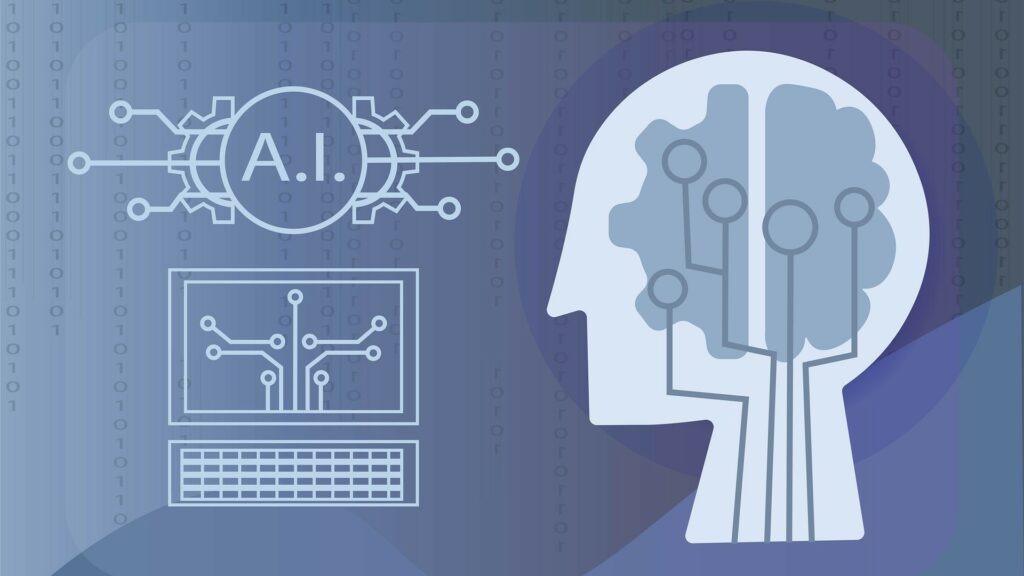
Hyperautomation and Project Management
Perhaps the first use of the term “automation” is found in the fifth book of Homer’s Iliad, when the goddess Athena enters the Hall of the Gods, its doors are referred to as automatai for their ability to open and close automatically. In this context, the unassisted movement is not surprising, given the Gods’ supernatural powers, but it is interesting that this “magical” effect is credited to the skill of the divine blacksmith and craftsman, Hephaestus. Highly skilled in techne – the art of doing things – Hephaestus was the first maker.
Nowadays, doors open automatically as a matter of course, and other automatic processes serve us in everyday life; unlike the Greek gods, we still have to do some work, but luckily, a new kind of automation is available to help us. This is especially true in team activities, where the complexity caused by interactions and integrations is mitigated by the wise use of automatic tools.
Thorough and systematic use of automation technologies to simplify the processes of an organization is sometimes referred to as hyperautomation. Tools – mainly AI-based – already exist for this, but they must be correctly used and monitored to be effective. Here are some of the benefits on offer:
Time-saving
The benefits of introducing a complete automation pipeline in a process are measurable – appropriate Key Performance Indicators (KPIs) can be assessed by managers and executives. Project managers in particular should rely on these KPIs to drive their decision-making during a project’s lifecycle. The aim here is primarily to measure time in order to save time, but improved quality in the various processes involved can also be achieved, correlating to simplification.
Less coding
An analogy familiar to developers is the DevOps pipeline: once, activities such as testing, deploying, QA and user tests were part of an assembly line, in which different people with different skills and different tools had a range of goals. Now, everything is code, processes are piped and unnecessary, time-consuming steps are simply avoided. Simplification is achieved by integrating processes, which are no longer sequential, and by unifying technological patterns; more or less everything is contained in code and text files.

Simplification of processes
Developers are used to software tools that simplify and integrate their activities: the same functionality is now available for every kind of process. Hyperautomation could even reduce the amount of coding an organization requires – that doesn’t eliminate the need for developers but frees them to concentrate more on application logic and interaction and less on queries and procedural coding.
Security and safety
Last but not least, in many contexts, hyperautomation helps to improve security and safety in the workplace. Tied, in essence, to Robotic Process Automation (RPA – despite the name, these are process-driven software activities) and Artificial Intelligence (primarily Machine Learning), hyperautomation can improve safety and security from both the physical and the logical point of view. For example, hyperautomation can help to integrate the various tools that form an organisation’s cybersecurity ecosystem; most security solutions aim at diverse goals and are only sparsely integrated. Hyperautomation can provide a level of integration that makes cybersecurity more effective, as long as appropriate policies processes are designed in advance.
Applications of Hyperautomation
The benefits of hyperautomation are felt in a number of fields of application. In practice, every business experiences improvement as automation is introduced into its processes – especially, but not exclusively, in internal processes. External processes, such as interfaces with customers, suppliers, and so on, also benefit. Of course, some businesses are more obvious beneficiaries of hyperautomation than others: healthcare, industry, banking, or insurance, for example.
Regardless of the scope of automation, to better understand the technologies that enable such processes (which will also be discussed in more detail), let’s take a closer look at some examples of automation:
First and foremost, there are the tools that automate backend processes; these now reach beyond assembly lines that utilise robotics managed and monitored by human operators, to processes of documentation or the internal workflow practices of a company that offers a varied range of services. When we speak of “robotics” in hyperautomation we mean software tools that provide easy-to-write integration scripts, enterprise application integration, and orchestration for configuration, monitoring, and security.

For example, a company might need to receive emails from suppliers about the delivery of certain goods or products, in order to record and track the delivery. The process can be completely automated as follows:
- A Robotic Process Automation (RPA) bot (see below for more on this) checks the email accounts for emails relating to that particular delivery and extracts the relevant information; a Natural Language Processing (NLP) tool may be used to help the RPA to extract information from textual data.
- This information feeds an AI system, which validates the content in relation to a certain pattern, for example. The system checks that the necessary data matches specific criteria.
- If an anomaly is detected by the AI, the email can be handled by a human expert.
- Another RPA bot takes care of communicating the outcome to the supplier.
This is a simple example, but improving processes like this one can provide tremendous benefits to a company.
Software processes may also be improved, for example by using hyperautomation to couple two key ingredients: integration and testing.
An integrated test platform usually needs several products in a single workflow, e.g., the Integrated Development Environment (IDE) system, a deployment platform, an API manager, a Test management tool, and other Application Lifecycle Management tools. Integration allows these tools to talk to each other, while pipelines and automation tools can address the problem of connecting the output of one tool to the input of another tool.
However, human intervention and decision making are still required: hyperautomation reduces, but does not completely avoid, the need for human intervention. Repetition and bureaucracy, which are always present in business processes, even software-facilitated ones, can be absorbed by hyperautomation, leaving people in charge of the most creative and delicate tasks.
In other words, you cannot completely remove people from a testing process, but they can be freed to focus on real quality issues.
Hyperautomation trends to follow in 2022
Companies are on the move: hyperautomation is no longer an optional extra, but an integral part of improving businesses.
Here are some of the most current hot concepts:
First up is Robotic Process Automation or RPA, not to be confused with Artificial Intelligence. While AI is about predicting and classifying in a data-driven way, RPA focuses on workflows in a process-driven way. RPAs will not make decisions by themselves, as an AI could, but will follow a process that has been designed and implemented in advance.
The task of the RPA is not to discover new things but to ensure things go as expected, in the most efficient way possible. Of course, RPA and AI can – and indeed should – be combined to manage the complex workflow that the RPA accomplishes via AI tools, but also to automate pipelines used by AI tools which otherwise would require human intervention.
Nevertheless, AI and – even more so – Machine Learning are basic tools in setting up a hyperautomation solution, not only in cooperation with RPA but also in their own right, since they reduce the need for human intervention in most tasks. For examples of this, think of chatbots, decision-making tools, recommendation systems, and so on.
A key feature of RPA is the low-code capability it enables. This does not mean that developers are no longer needed, but that most scripting tasks can be automated. After all, developers are used to automatic code production in their IDEs, and interaction with services and API often relies on low-code features.

Another key feature of hyperautomation is its impact on business process management: traditional BMP solutions allow users to design workflows and partially execute them, or at least offer support in their execution. Hyperautomation aims to make these processes and their execution as autonomous as possible; steps that can be performed by software are automated and human intervention is kept to a minimum. It cannot be stressed enough that it is crucial that the process has been designed in advance. People within the organisation can focus on this design element and on monitoring and control, rather than the hard and repetitive jobs taken over by the software.
Once a process is automated, it will work continuously and smoothly, minimising the possibility of errors. From a quality perspective, once the process has been designed to be compliant with quality standards and policies, hyperautomation ensures that such goals are automatically achieved.
Moreover, a business process that has been automated can be more easily monitored: the level of analytics that an RPA can guarantee is much higher than if data related to control are collected “by hand” or using traditional tools.
Conclusions: Should I Embrace Hyperautomation?
Embracing hyperautomation is a winning strategy; organizations whose business is focused on workflow processes can no longer afford to procrastinate. With that in mind, the biggest mistake is to employ different tools for AI, RPA, etc. Instead, a single hyperautomation solution should be used to integrate the existing ones. Above all, processes need to be assessed, refined and, if necessary, changed, before they are implemented in the hyperautomation platform.
This is essential for any company that wants to achieve a true digital transformation – even processes need to be digitalized.
It is evident that achieving the best outcomes requires particular expertise. Choose a consulting partner such as Mauden – engaging a specialist in the transition to automated business processes ensures a successful shift.





